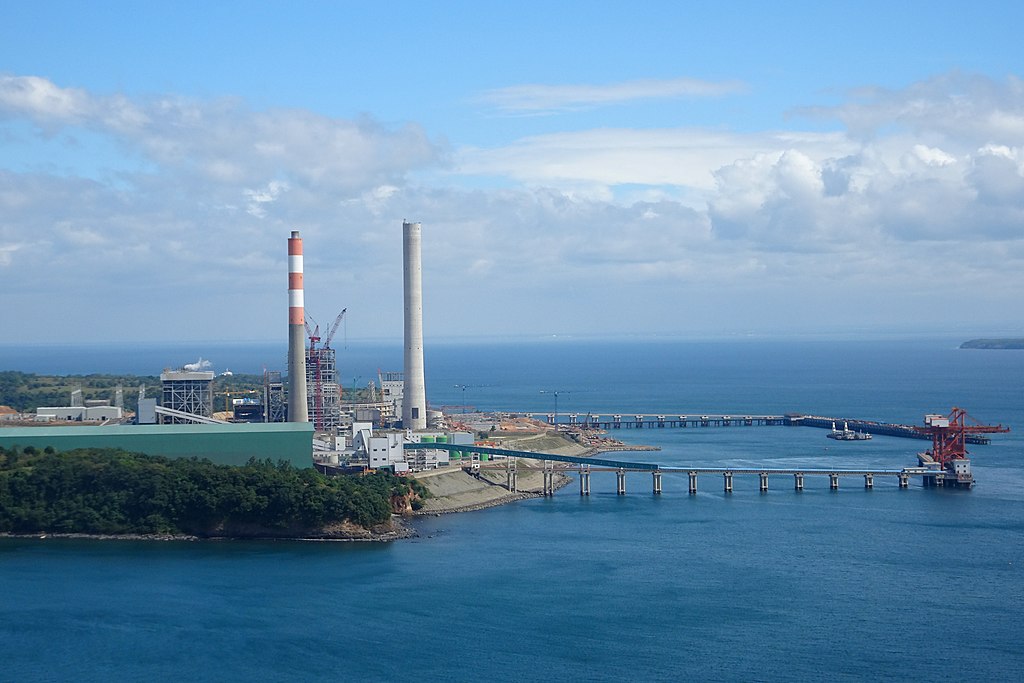At least 5 power plant units with over 100 days of forced outage
- June 8, 2021
- 0

The Energy Regulatory Commission (ERC) has identified at least five power plant units that have been forced out of service for over 100 days, way past the allowable period set.
Topping the list, which the ERC submitted to the House Committee on Energy at its hearing last Friday, is the Calaca coal-fired power plant’s 300-megawatt (MW) Unit 2 and the Sual coal plant’s 647MW Unit 2, which have been offline for at least 113 days. Also on the list is the 300MW Unit 1 of the GNPower Mariveles coal facility (photo above), which was out for at least 107.23 days. Coal plants are only allowed 16.8 days of unplanned shutdowns per year.
The three plants were major contributors to last week’s Red Alerts, which triggered rotational brownouts in Luzon, including Metro Manila. Calaca is owned by Consunji-led Semirara Mining and Power Corporation, while Sual is jointly managed by TeaM Energy and SMC Global Power Holdings. Aboitiz Power Corporation is the majority owner of GNPower Mariveles. The said firms are among the 17 power generating companies (gencos) being probed by the government for various violations following the Red Alerts.
The other two plants that logged in over 100 days of forced outages are Cebu-based SPC Power Corporation’s Panay diesel power plant in Iloilo with 109.99 days and Units 3 and 4 of AboitizPower’s Manolo Fortich hydroelectric power plant in Bukidnon with 104.35 days. Diesel plants are only allowed 14 days of unplanned outages, while hydro plants are only allowed 6.8 days. SPC Power is also under investigation.
In a separate statement on Monday, the ERC said it has identified the gencos that didn’t comply with the quasi-judicial body’s reporting requirements regarding forced plant shutdowns.
The ERC cited that only 1,288 out of 2,083 unplanned outages from January to April were reported, while 220 of the 236 planned outages for the same period were conveyed to the commission. In light of this, the regulatory body will be issuing Show Cause Orders to the gencos that failed to comply with its reporting requirements.
This comes as the ERC has launched its own probe of the gencos’ involvement in the Red Alerts, which also triggered price spikes in the Wholesale Electricity Spot Market (WESM) prices. Malacanang has ordered the ERC to help the Department of Energy probe the gencos.
“We have been monitoring the activities of the generation companies, especially those that underwent unplanned outages, that caused the thinning of power supply in the Luzon Grid. This was aggravated by the increased demand for electricity due to warmer temperatures. As a consequence, there has been sustained high prices in the WESM,” ERC Chairperson Agnes Devanadera said.
The quasi-judicial regulator has also created a task force to study, which has already identified the plants that will be prioritized for the conduct of technical inspection to verify the outages and to map out actions to get them back online.
The study also focuses on analyzing the hourly market data and correlating different factors in the WESM by assessing the causes behind the price spikes leading to the imposition of the secondary price cap, identifying the contributors to the unutilized capacities in the market, determining the supply-demand factors leading to the diminishing supply margin, identifying the compliance of the plants to their outage reportorial compliance and their reliability indices, and identifying the trading pattern in the market.
The secondary price cap is a price-mitigating mechanism to limit the increase in power rates.